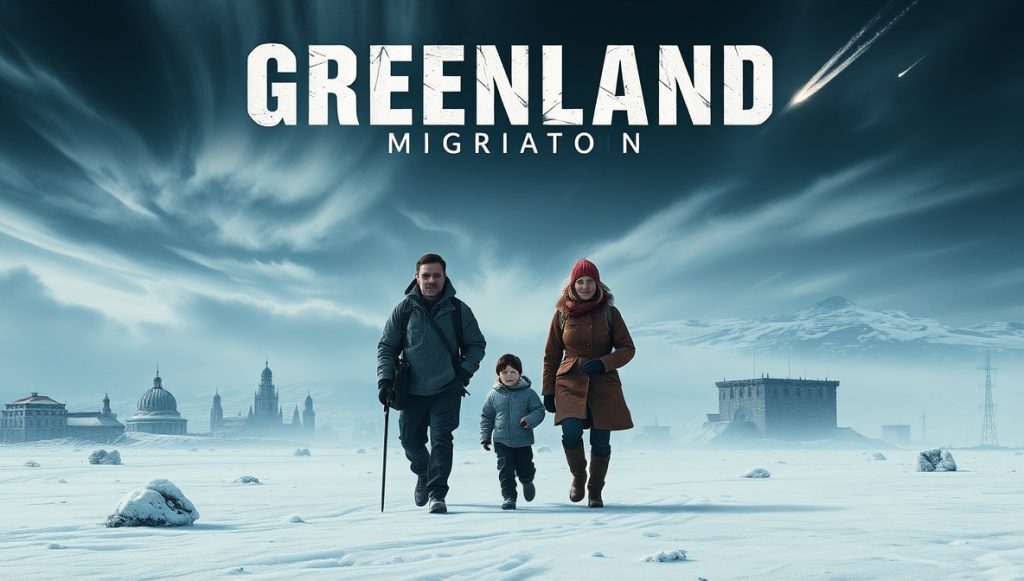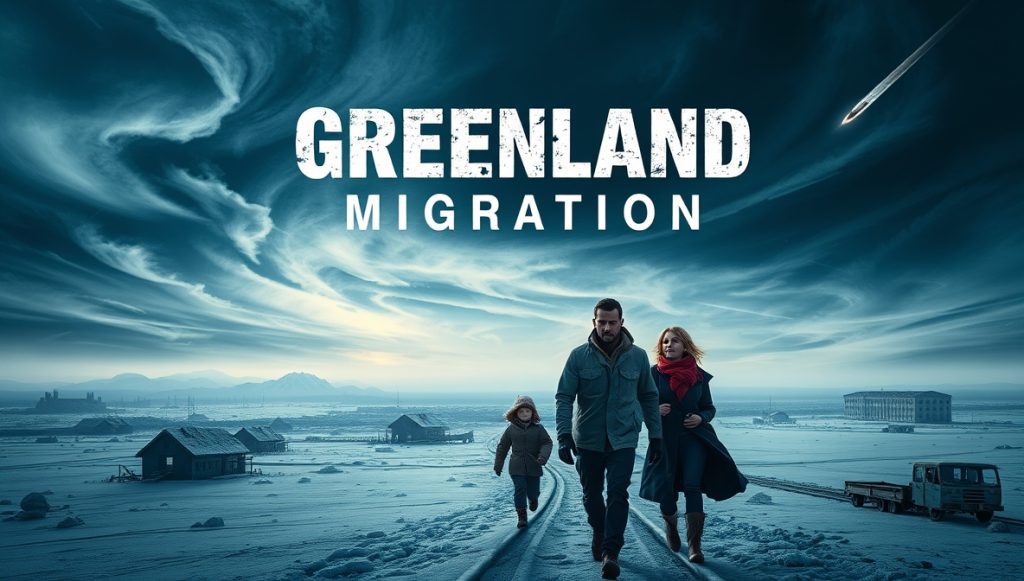“Discover the release date for Greenland Migration! Get ready for an intense survival story as the thrilling sequel to Greenland unfolds. Stay tuned for all the latest updates!”
The film is expected to be released in 2025 and will see the surviving Garrity family members leave the safety of the Greenland bunker and embark on a journey across a frozen wasteland to find a new home. Gerard Butler, Scottish star of 300 and Olympus Has Fallen, plays John Garrity.
Table of Contents
The Unique Phenomenon of Greenland Migration
Imagine a place where the breathtaking landscapes are only matched by the incredible movement of its wildlife. Greenland is not just a land of ice; it’s a dynamic environment where migration plays a crucial role. For adventure enthusiasts, travel bloggers, and geography students, understanding the Greenland migration is more than fascinating—it’s essential. This blog will explore the history, current trends, and future of migration in Greenland, offering valuable insights and practical tips for those eager to witness or study this remarkable event.

Historical Overview of Migration Patterns in Greenland
Migration in Greenland isn’t a new phenomenon. Historically, the movement of animals and people has been influenced by various factors such as food availability and climate conditions. The indigenous Inuit people, for instance, have long relied on the seasonal migration of seals and fish, moving with the animals to sustain their communities. Likewise, caribou and birds follow ancient routes, driven by instinct and necessity. These patterns have been well-documented, offering a glimpse into the resilience and adaptability of life in Greenland.
How Climate Change is Shaping Migration Patterns
Greenland is particularly vulnerable to the effects of climate change. Rising temperatures and melting ice sheets are causing dramatic shifts in migration patterns. Scientists have observed that some species are changing their routes, while others are experiencing population declines. The Arctic tern, known for its long migration from pole to pole, is now facing challenges due to shrinking ice and changing food availability. Understanding these changes is crucial for predicting future trends and developing conservation strategies.
Real Stories from Adventurers and Travelers
There’s no better way to understand Greenland’s migration than through the eyes of those who’ve experienced it firsthand. Take the story of Anna, a travel blogger who documented her trip to Greenland last year. She followed a herd of caribou and captured their movement across the tundra, sharing breathtaking photos and insights on her blog. Another adventurer, Mark, trekked alongside migrating seals, providing valuable data for climate researchers. These stories not only inspire but also shed light on the intricate relationship between Greenland’s wildlife and its harsh yet beautiful environment.
Practical Tips for Witnessing Greenland Migration
Are you planning to witness the migration in Greenland? Here are some practical tips:
- Timing is everything. The best time to observe migration is during the spring and summer months when most animals are on the move.
- Local Guides can offer invaluable insights and help you track the movements of specific species.
- Sustainable Practices are crucial. Respect the environment, avoid disturbing wildlife, and adhere to local guidelines.
Sustainable Tourism and Its Importance
While Greenland’s migration offers a unique opportunity for adventure and learning, it’s essential to practice sustainable tourism. Overcrowding and human interference can disrupt migration patterns and harm the fragile ecosystem. By following sustainable practices, travelers can help preserve this natural wonder for future generations.
Practical Tips for Witnessing the Greenland Migration
For those eager to witness the Greenland Migration, preparation is key. Here are some practical tips:
Choose the Right Time
The best time to witness the migration depends on the species you’re interested in. Caribou migrations typically peak in late spring and early summer, while marine migrations can vary throughout the year. Research the timing of specific migrations to plan your trip effectively.
Gear Up
Greenland’s harsh climate requires specialized gear. Warm clothing, sturdy boots, and reliable camping equipment are essential. Don’t forget a good pair of binoculars and a camera to capture the breathtaking moments.
Respect the Environment
While witnessing the migration is an awe-inspiring experience, it’s essential to do so responsibly. Follow local guidelines, avoid disturbing wildlife, and minimize your environmental impact. Consider hiring local guides who can provide valuable insights and ensure a safe and respectful experience.
Greenland Migration Release
Witnessing the Greenland Migration is more than just an adventure; it’s an opportunity to connect with nature’s timeless rhythms and understand the profound impacts of climate change. This natural wonder offers a unique glimpse into the resilience and adaptability of both wildlife and human communities.
By recognizing the significance of these migrations and practicing sustainable tourism, we can help preserve this incredible phenomenon for future generations. Whether you’re a travel enthusiast, a blogger looking for the next big story, or a geography student eager to learn, Greenland’s migration has something to offer.
Join us on this remarkable journey and become part of a community that values nature, adventure, and sustainability. Ready to start planning your trip? Reach out to local tour operators, read more about Greenland’s ecology, and prepare for an unforgettable experience.

Frequently Asked Questions
What is the best time to visit Greenland for migration?
The optimal time is between May and August when most migratory species are active.
How is climate change affecting Greenland migration?
Climate change is altering migration routes and timing, impacting food availability and habitat conditions.
Can I join guided tours to witness the migration?
Yes, several local operators offer guided tours that provide educational insights and ensure minimal environmental impact.
When is the best time to see the Greenland Migration?
The best time varies depending on the species and specific migration routes. Researching the peak seasons for different animals, such as caribou in late spring or whales during their migratory periods, will help you plan your trip.
How is climate change affecting Greenland’s migration patterns?
Climate change is causing shifts in migration patterns due to rising temperatures, melting ice caps, and changing habitats. These changes affect food sources, breeding grounds, and the overall ecosystem, leading to adaptations and challenges for many species.
What should I pack for a trip to Greenland to witness the migration?
Essential items include warm clothing, sturdy boots, camping equipment, binoculars, and a camera. It’s also recommended to bring environmentally friendly products and follow guidelines to minimize your impact on the environment.
Are there any local guides or tours available for witnessing the migration?
Yes, many local guides and tour operators specialize in eco-friendly tours that focus on Greenland’s migration. Hiring a guide can enhance your experience and ensure you witness the migration safely and responsibly.
How can I contribute to sustainable tourism in Greenland?
Practicing sustainable tourism involves respecting local guidelines, minimizing your environmental impact, supporting local businesses, and educating yourself about the region’s ecology and culture. Engaging in responsible travel helps preserve Greenland’s unique natural wonders for future generations.
Join the conversation and share your experiences with the Greenland Migration! Your insights and stories can inspire others to explore and appreciate this incredible phenomenon. Happy travels!
Conclusion
Witnessing the migration in Greenland is an awe-inspiring experience that offers valuable lessons about our planet’s resilience and adaptability. By understanding the historical context, current trends, and future challenges, we can appreciate the significance of this natural phenomenon. Whether you’re an adventure enthusiast, a travel blogger, or a geography student, there’s no better time to explore the wonders of Greenland migration. Join us on this incredible journey and contribute to sustainable tourism efforts to preserve this natural wonder for generations to come. Learn more about how you can be part of this unforgettable experience.



